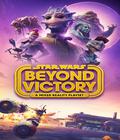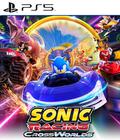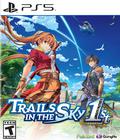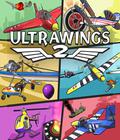Ultrawings was one of my favorite VR games on PSVR, and it was the first to thoroughly impress me. It's a flight simulator for those who don't have time for the actual simulation part. While it looked relatively simple, it provided hours of flying fun and plenty of challenges and jobs to complete. The best thing was the simple yet realistic physics simulation of its aircraft, and it provided a decent amount of interactive elements in the cockpit without being overwhelming. The result was satisfying, and it made flying as simple as possible without compromising on its simulation aspects. Things got a bit repetitive over time, and the small selection of islands and mission types became stale. Thankfully, Bit Planet Games has been hard at work on a follow-up, and I'm pleased to say that Ultrawings 2 on Quest is a substantial step up from the maiden voyage.
Ultrawings 2 takes the formula established in the first title and essentially pads it out in all directions with a lot of content and a few new ideas. Four islands with diverse terrain are dotted across the sea, each with missions and airports that can be tackled in one of five different aircraft, including a fully armed warplane. There is a lot more variety from the outset, whether it's stunt challenges through the skyline of skyscrapers, dogfights against NPCs, shooting balloons with a handheld gun, or one of the many other challenges. Ultrawings 2 gives you lots to do, and the terrain variety fosters a strong selection of activities. It feels like an open playground for aerial fun, but it wouldn't be half as exciting if the flying weren't up to snuff.
At its best, Ultrawings 2 feels like a toned-down, plug-and-play flight simulator, and I mean that in the most flattering way possible. Not a lot has drastically changed, but the improvements are easy to spot. Each aircraft has different buttons and levers to get your plane securely in the air and back on the ground. Since the planes don't all behave the same, there is a learning curve for each. It strikes a satisfying balance of immersion due to its semi-realistic handling, but it never throws too many gameplay mechanics at you. Within any aircraft, you're able to control the fuel, landing gear, throttle, and even wing flaps. Each aircraft handles and uses fuel differently, and that can make longer excursions tricky if you don't account for it. Once you do, flying across sandy canyons, white beaches or thick concrete jungles feels like an incredibly exhilarating exercise. When it escalates to you holding a gun in one hand while trying to safely navigate your plane under a narrow bridge with the other, you may realize that you're not as much of an ace pilot as you had thought.
Especially impressive is how Ultrawings 2 incorporates immersive controls. Your flight stick is entirely motion-controlled with either hand, which sounds like it could potentially compromise the level of control you have. The game solves this quite well by providing a mix of audio and rumble feedback. You'll usually get a feel for how far you are moving the stick to either side without having to keep an eye on it. There are some limitations due to the game being a timed Quest 2 exclusive. Tracking is limited to the field of view of your headset cameras. If you turn around too much, your hand can narrowly escape the tracking window, and you'll briefly lose tracking. However, these situations are rare, and unless you have an iron stomach, you won't want to turn around too much anyway.
You progress by taking on jobs and missions in your planes, earn money, and invest that money into even more planes and airports. Unlocking every airport and every plane can eat up several hours of gameplay. The developers claim up to 60 hours of content if you want to reach 100% of the game in its current state, and future additions are not included in that gameplay time. Without trying to achieve the best results in every mission, you'll easily have over 20 hours of varied content and progression to look forward to; that's an excellent amount, considering the scope of the project and how well the gameplay mechanics are executed.
I generally do well with motion sickness, but Ultrawings 2 tested my resilience plenty of times. You'll inevitably end up upside-down, rotating and flipping your plane in many directions at incredible speed, and that comes at a price. There are two levels of comfort options that black out the windows on the plane in your peripheral vision either entirely or partially, and while that helps, the comfort options can get in the way of gameplay. For challenges where you need to pop as many balloons as possible in a given time frame, blacked-out windows can make it tougher to spot balloons, and if the balloon is between two window panes, looking back and forth will black out one of them. It's not the end of the world, but it can be frustrating when you're under a time crunch. Even with these comfort options enabled, Ultrawings 2 should not be your first VR experience. If you're very susceptible to motion sickness, I'd be extremely careful, and I wouldn't recommend playing the game without enabling the full suite of comfort options.
On a technical level, Ultrawings 2 doesn't look remarkable in the traditional sense, but since it runs natively on the Quest 2, this is an impressive release. Textures are simple and void of granular detail, giving the game a very comic-like appearance, but it works well in the headset. Immediate surroundings look sharp, and the draw distances across the map and its four islands are excellent given the weak mobile hardware and variety of environments on display. I didn't run into any technical issues during my review period. Even if the lower visual fidelity is an issue, the game has a PC release lined up, which should give the experience a small bump in visual fidelity. If you own the Quest 2 version, the Oculus PC version can be claimed for free when it releases in March.
However, the entire experience isn't perfect. Ultrawings 2 features many small-scale missions that can be completed in a couple of minutes, so you'll get in and out of planes frequently. Missions are also inconsistently paced. Playing several missions of the same type in a row, you may have to start the plane and complete the mission, complete the mission completely in the air, start in the air, or complete the mission and then land the plane. While that is probably meant to increase variety, I'd love to freely decide how to tackle a mission. Why not provide the option to skip the start or landing sequences in missions to get to the action faster? Landing maneuvers can provide some frustration since a failed landing jeopardizes the entire mission. You could set a world record in a mission, only to screw up the landing and have to redo the entire thing.
That said, during the first two weeks since release, two patches have already rolled around and fixed two other gripes I had with the game. For one, you can now restart a mission if you fail, which wasn't previously possible. It was also very difficult to earn enough cash to advance if you didn't get gold medals in most challenges. Money rewards have been rebalanced, so that bronze and silver results don't slow down progression too much. Bit Planet Games is showing an appreciated level of commitment to respond to feedback and improve the experience going forward. That also includes a content roadmap, including online dogfights with other players and a racing mode. Some of the planned additions will be either paid or free content.
Ultrawings 2 is a surprisingly well-realized sequel. A decent variety of planes, environments, and missions make the game the ultimate VR flight simulator for those who want the sensation of darting through the air in a plane without the baggage of actually controlling one. If you love that idea and have an iron stomach, Ultrawings 2 provides hours of lofty entertainment in VR that is currently unparalleled.
Score: 8.5/10
More articles about Ultrawings 2











 Take to the skies using your virtual hands to fly five unique aircraft as you complete a diverse set of engaging missions across an island-themed world in this made-for-VR, aerial-themed, action-adventure game!
Take to the skies using your virtual hands to fly five unique aircraft as you complete a diverse set of engaging missions across an island-themed world in this made-for-VR, aerial-themed, action-adventure game!



